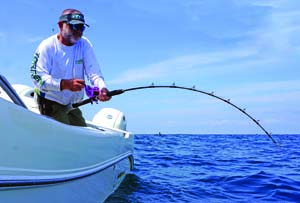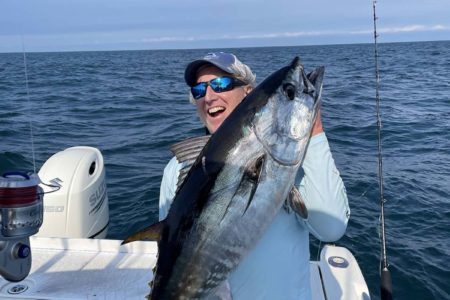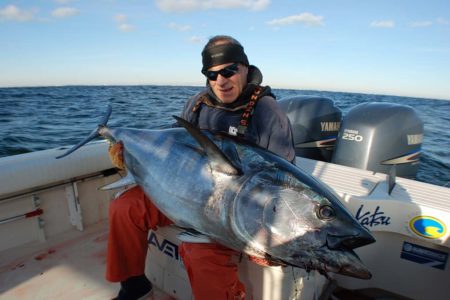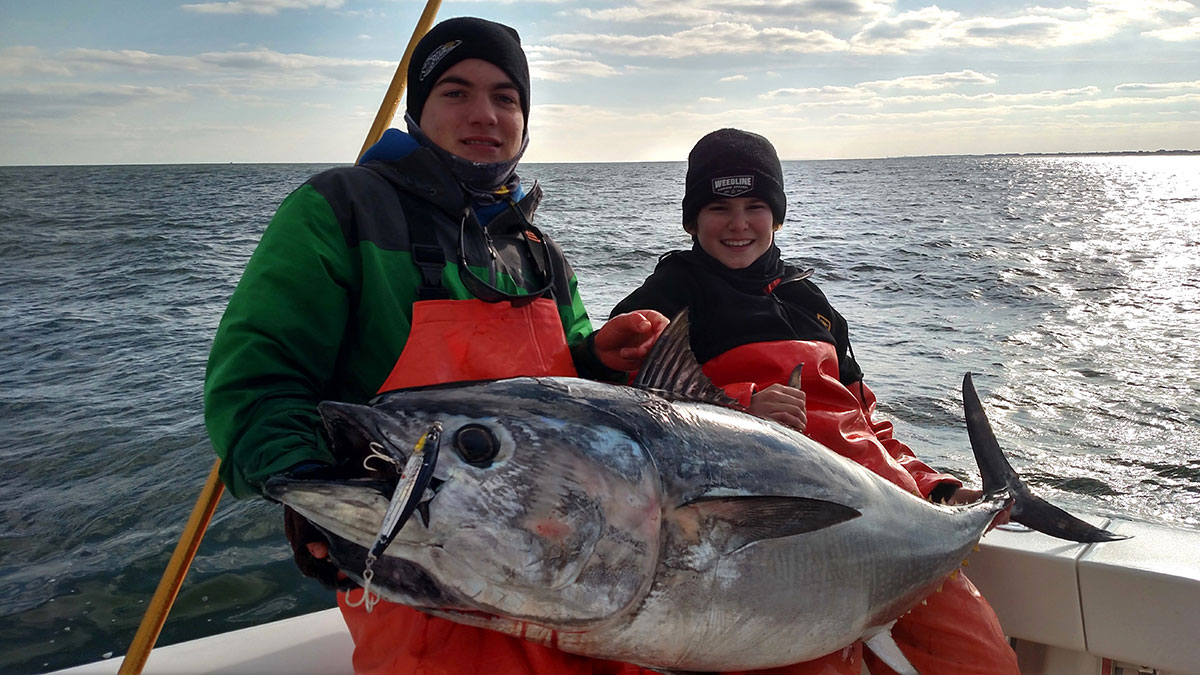
Bluefin, one of the hardest fighting fish in the ocean and one of the most exhilarating species to catch, will be on tap for this month for anglers who are willing to put in their time and run the miles. This is the time of year when bluefin in the 50- to 150-pound range make their southerly migration to the Carolinas and their migration route can put them right off the Jersey Shore.
This has been the case the last several seasons when the bluefin have been 3 to 15 miles offshore of Manasquan Inlet where I head out, making them legitimate targets to go after. Targeting these tuna in my area has now become more the norm than limited to only a group of select anglers but don’t get me wrong there is a select group that are at the top of this game.
What is going to bring the bluefin within range is if there is bait to draw them in. Since bluefin, I believe, need to eat everyday they are not going to transient an area that is void of food. In our area we have five key baits that can hold bluefin, squid, mackerel, menhaden, sand eels, and juvenile silver hake, aka whiting, that can only be an inch long. Which baits we see varies each year.
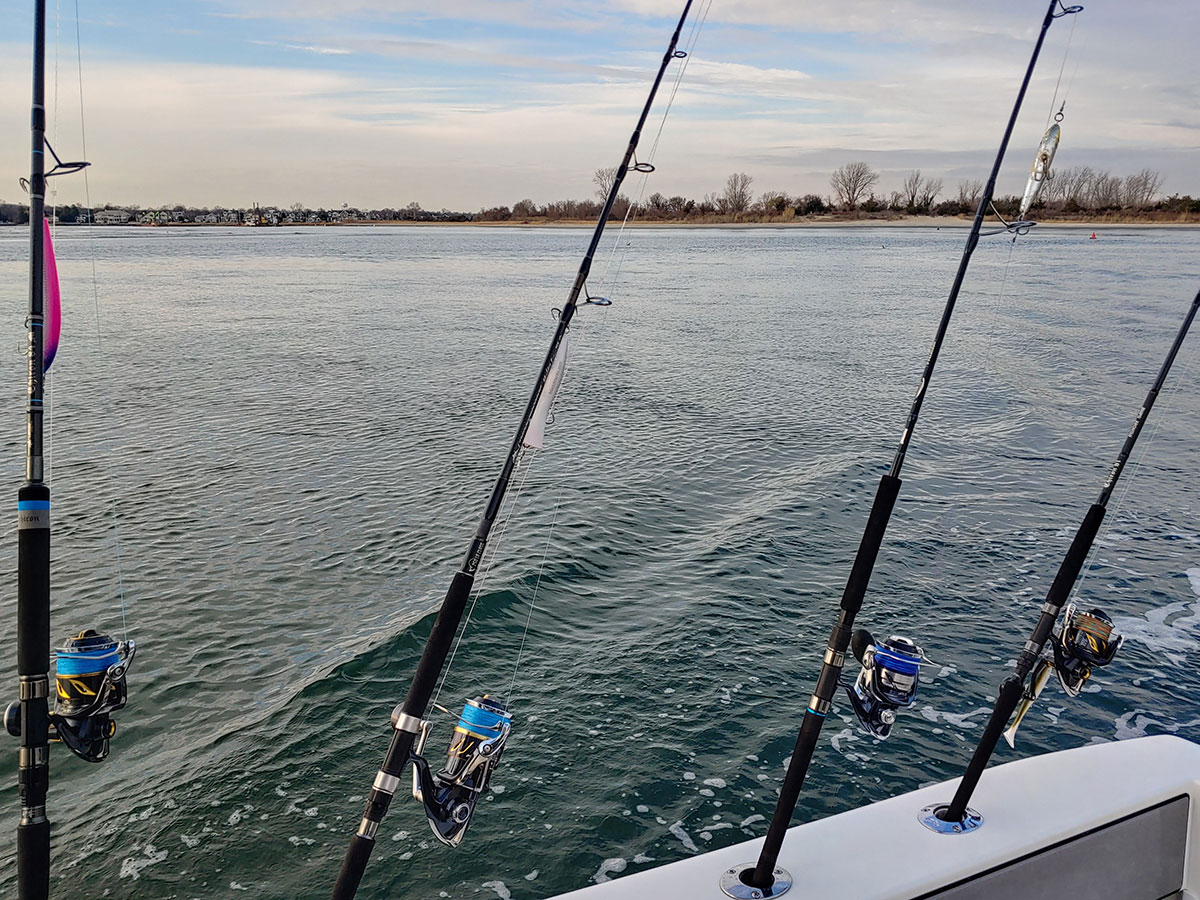
On The Hunt
This is a hunting game to find these fish so you will need to commit to putting in a lot of miles and burning a lot of fuel if you are serious about it. Running straight out from the inlet and running smack into bluefin can happen but more than likely it will not. However, I still like to have the most recent intel that I can get as to where the bluefin have been before I head out. This gives me a starting point to head in hope that if the bait is still there so will be the tuna.
The hunting is highly visual as you look for the telltales signs that bluefin are in the distance. I like to tell everyone onboard to scan every inch as you need to look in a 360-degree radius as you are moving forward. We are looking for just one or two gulls, terns, shearwaters, or tuna chicks that may be hovering just about the surface of the water as they move along. This behavior indicates that they are seeing a bluefin just below the surface. Using a good pair of stabilizing binoculars will work to your advantage.
Hitchcock style bird action like we see for striped bass is rare but can occur if the bluefin are funnel feeding on small hake that can be all over the surface. Marine mammals such as whales and dolphins which are diving, surfacing, and circling is another telltale sign that they are feeding and could be holding bluefin with them. On a clear day you can observe dolphin purposing or the see the vapor blow of a whale a quarter mile away.
When you have a target within your sights the throttle man is going to be a very big part to the key to your success. These bluefin are notorious for popping up and then quickly sounding only to come up again several hundred yards or as much as a half mile away. Therefore they have been dubbed “ghosts” because they appear and disappear quickly. It is important for the throttle man to watch the pod and see which way it is moving and then quickly position the boat in front of the tuna. All this must be done without getting to close or the tuna will sound.
Once the boat is in position anglers must be ready to make the cast so that the artificial lands in front of the pod and then is retrieved away from it so it mimics what would happen in the wild, which is a tuna chasing down a bait. Pulling the artificial towards a pod of bluefin or across their path is not as realistic or effective. The casting ability of your angler can also make or break you as a poorly placed cast to the right or left will not get bit. The tuna will not turn and chase the artificial like a bluefish might. Placing the artificial right in front of its nose is what will draw the strike, one that I believe is an aggression strike.
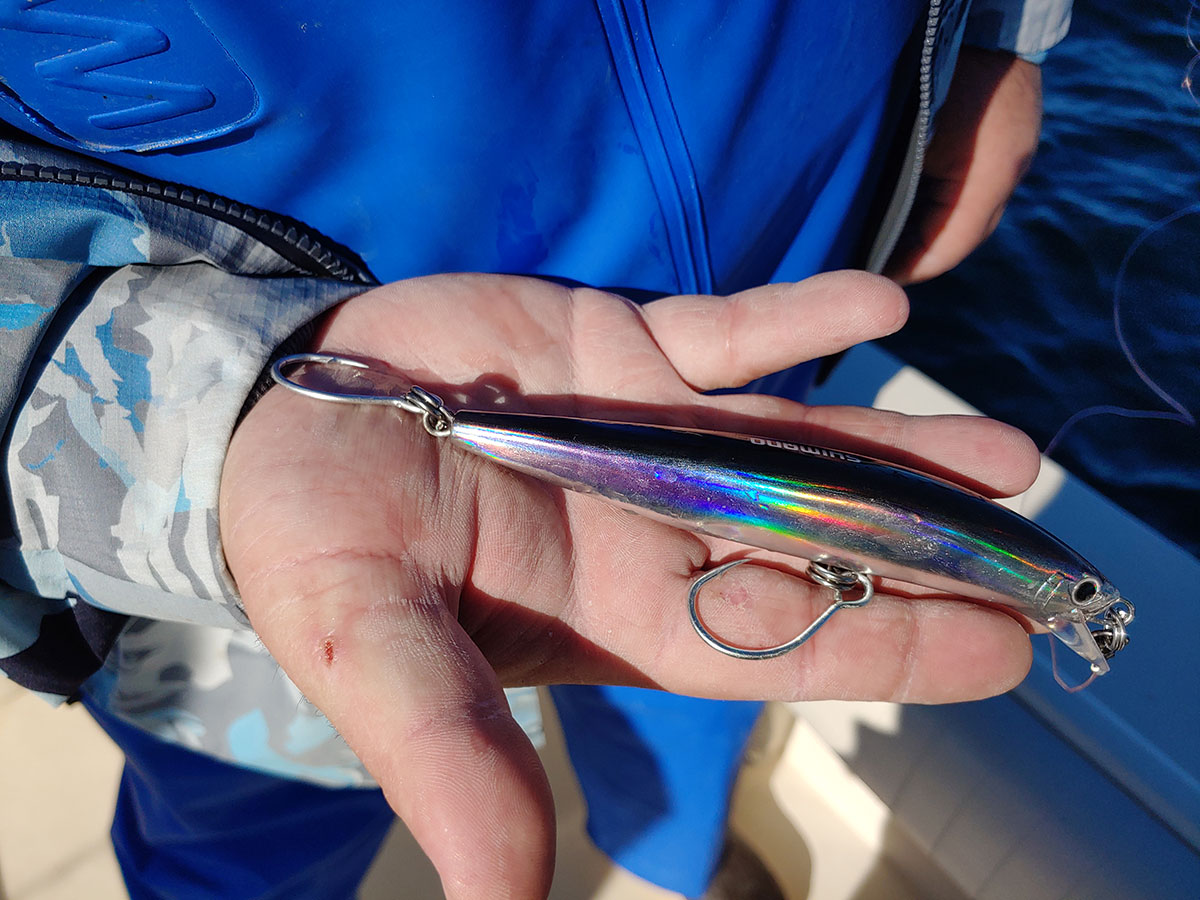
All Geared Up
Stickbaits, poppers, Hogy style baits, and paddletails are the lures of choice to cast to the bluefin. For my first time clients I like to let them first throw poppers because they are easy to cast and can be cast far. They are also easier to work than a stickbait when casting with a 7-foot, 6-inch to 8-foot, 2-inch specialized spinning rod. The popper is not retrieved as you would for stripers. It is not the pop, pop, pop in a continuous motion. Instead it is a pop with a pause. The pause is what I think triggers the aggression strike from the bluefin as it goes in for the kill after what it thinks is an injured bait The retrieve for the stickbaits that is most effective is a long sweep followed by a pause. It is not a steady striper type of retrieve. We have been experimenting with paddletails and have found the retrieve that works best is the exact opposite of that for stickbaits and poppers; These have worked best when cast out, allowed to sink just below the surface, and then ripped back to you.
Casting 8- to 10-inch RonZ or NLBN type artificials fished on 1- to 4-ounce jigheads are also very effective at this time of year because you can get them to sink deep into the water column and cover a lot of water vertically if the bluefin are not responding up top. These are also very easy for clients to cast. These can be fished in a variety of ways as I have caught bluefin using many different types of retrieves. A slow twitch, erratic jig, or ripping it through the water have all worked.
The rod and reel of choice when to bluefin is a specialized (7’8”-8’2”) spinning rod like the 7-foot, 9-inch Centaur Chiron Inshore Game or the 7-foot, 8-inch Nomad PE 8-10 popping rod. I spool these with 80-pound braid and 80- to 100-pound fluorocarbon leaders with a 14000 Shimano Twin Power as my reel of choice. The Shimano Stella 14K or Van Staal 250 is also ideal. I like to use a BHP Tackle pre-made casting leader that has a loop in the end, connected via “loop to loop” with my braid. This connection should not sit around the reel when you are ready to cast or it will cut down on your distance, but should be just off the reel below the first guide. For this reason, I will cut down the pre-made BHP 12-foot leaders to about 8 feet.
For stickbaits I use sinking types because you want them to be able to dig just below the chop. My favorites are Nomad Design Madscad Holo Ghost, Shimano Orca, Smith Baby Runboh, and the Tailwalk Gunz. Shimano also has a Coltsniper tuna grade lipped swimmer that is easier to work then a lipless stickbait. My most productive poppers are the XL or regular Madd Mantis, M. Fischer, and Nomad Chug Norris. Ronz’s are the Big Game HD and paddletails are the Hogy Harness Protail swimbait and Protail Paddle swimbait.
Throughout the season I am always ready to cast at bluefin when they show themselves but it is a topwater catch during December that will mean a lot more than any other time of year. It’s a different game altogether right now in terms of your strategy; it’s cold out there, and the bluefin can be finicky. Many days you can be on the tuna, make the perfect cast, and not get a bite. And if you do hook up, since the water is much colder, the bluefin will retain their stamina longer before tiring out and going into their death spiral. This means a much longer, more challenging fight. The angler’s fish fighting ability will come into play here. Anglers that are experienced at this game will be able to subdue a tuna much quicker than a first timer.
You will also need to pick your days. Cold windy days are going to be a “no go” because once you get out 5 miles or so wave heights will make it unsafe. Calm days are best however this may not happen on the weekend when you are able to go. Those boaters that are most flexible and can go at any time will have the best opportunity to score.

